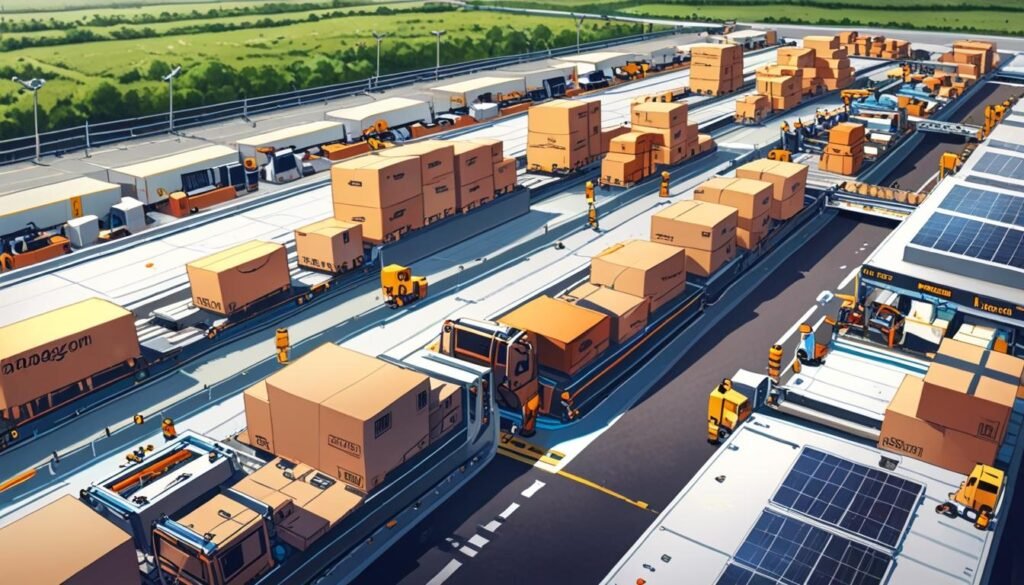**London**: Amazon’s sophisticated digital supply chain integrates advanced algorithms, robotics, and big data analytics, ensuring optimal inventory and efficient logistics. With commitments to sustainability and innovations like same-day delivery, Amazon sets a benchmark for e-commerce excellence and operational efficiency in a competitive landscape.
Amazon has established itself as a leading force in the global e-commerce domain, largely due to its highly sophisticated digital supply chain. This intricate system, showcasing a remarkable blend of technology, logistics, and customer focus, facilitates seamless connections between suppliers and consumers.
At the heart of Amazon’s operational excellence is its ability to predict stock requirements with great accuracy, achieved through advanced algorithms and machine learning. This technology ensures that inventory levels are optimised, allowing products to be consistently available to customers, significantly reducing the risk of both surplus and shortages.
Inside Amazon’s fulfilment centres, a highly automated environment is evident. Robotic technology works alongside human labour, enhancing both speed and precision in the picking and packing processes. This synergy between machines – part of Amazon Robotics – and human employees aims to increase efficiency while minimising errors.
Amazon Web Services (AWS) plays a crucial role in the company’s supply chain by providing essential computational power and data storage. This cloud computing capability allows Amazon to efficiently process the vast data generated from multiple transactions every second, facilitating rapid scaling during peak demand periods, such as major shopping events.
The company’s adept use of big data informs decision-making across various levels. Each customer interaction on Amazon’s platform feeds into a vast database, enabling the company to anticipate consumer preferences and trends. This predictive capacity is complemented by continuous monitoring of supplier performance, which ensures adherence to Amazon’s stringent quality and delivery standards.
Globally, Amazon operates more than 175 fulfilment centres, deliberately situated to optimise storage solutions and enhance delivery efficiency. Its extensive delivery network, which includes initiatives like the Amazon Flex programme that employs gig economy drivers, underpins the company’s competitive edge in logistics. This adaptability allows Amazon to respond swiftly to fluctuations in customer demand across various regional markets.
Among the notable innovations that have emerged from Amazon’s supply chain strategy are the services of same-day delivery in select locations, the establishment of Prime Now hubs for rapid shipping, and the introduction of grocery delivery services through Amazon Fresh and Pantry. These innovations are specifically designed to enhance user experience, catering to evolving customer expectations for speed and convenience.
In recognition of environmental responsibilities, Amazon is implementing sustainability measures within its supply chain. Committed to reaching net-zero carbon emissions by 2040, the company is transitioning its operational model to be more eco-friendly, focusing on electric delivery vehicles, efficient packaging solutions, and investment in renewable energy sources. The firm has set ambitious goals, including powering its operations with 100% renewable energy by 2025, and reducing single-use plastics in packaging.
Amazon’s digital supply chain exemplifies a dominant blend of innovation and consumer-centric practices, reflecting its commitment to efficiency, scalability, and sustainability. As the e-commerce landscape continues to evolve, Amazon remains focused on refining its supply chain capabilities, poised to address future challenges while enhancing customer experience. The complexity and effectiveness of Amazon’s supply chain serve as a definitive model for businesses aiming to replicate its success in the competitive digital marketplace.
Source: Noah Wire Services





